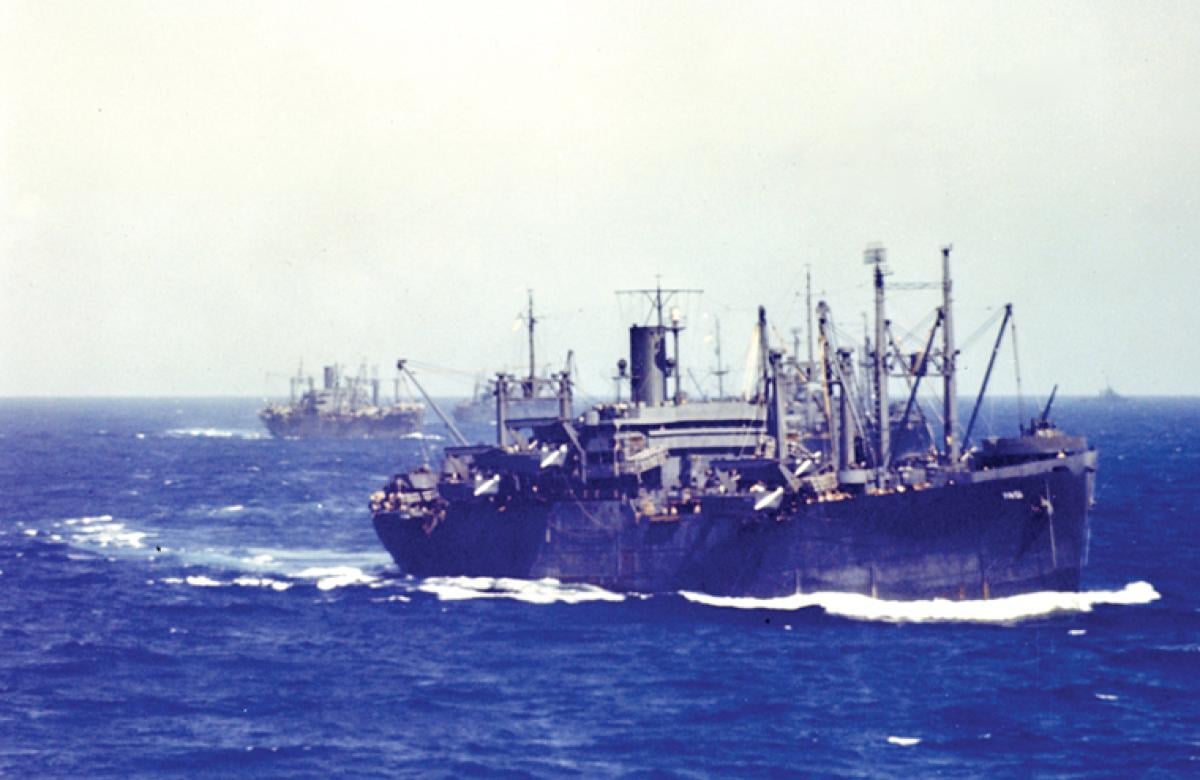For more than a hundred years, U.S. Navy ships were known only by type and name, as in “the frigate Constitution.” But as more and more ships entered service, this practice became cumbersome and often confusing, as ship names sometimes were repeated—by 1874 there had been five ships named Enterprise (with four more to come, not counting the starship!).
It was becoming clear that a more distinguishing system was needed, and in the 1890s the Navy began assigning unique “naval registry identification numbers” to its ships. This simple system called for the name of the ship followed by its type (spelled out) and a unique number for the individual ship of that type. For example, the first cruiser was the Newark (Cruiser No. 1), the second the Charleston (Cruiser No. 2), and so on. In 1907 this system was modified to allow abbreviations, using just a “C” for cruisers, as in the Olympia (C-6), a “B” for battleships, as in the Massachusetts (BB-2), “ACR” for armored cruisers, as in the Maine (ACR-1), and so on.
In 1920 the Navy adopted the system that—although modified over the years—still is used today. It prescribed at least two letters followed by numbers in sequence for each individual ship. These technically are called “hull classification symbols” but when combined with sequential numbers they are popularly known as “hull numbers.”
For some types of ships, a letter was simply repeated, as in “BB” for battleship, “DD” for destroyer, and “SS” for submarine. For others, the letters differed, as in “CV” for aircraft carrier. Over time, new ones were added, some were abandoned as ship types became obsolete, and some classifications were modified, as in “DDG” for destroyers equipped with guided missiles, and “CVN” for aircraft carriers powered by nuclear propulsion.
Generally, ships retained their assigned hull numbers throughout their “lives,” but some were changed as a result of modifications to the ships themselves or because of a redefinition of types. Once guided missiles were added to the destroyer Parsons (DD-949), she became DDG-33, and the Forrestal-class aircraft carriers began their lives as CVs, were redesignated CVAs in 1975, and then later reverted to CVs as new thinking was applied to their missions.
There have been some evolutionary changes to the system. During World War II, cruisers were either CLs (for “light cruiser”—based on the caliber of their main batteries, not their tonnage) or CAs (for “heavy cruiser”), but with the addition of guided missiles, they became CLGs and CAGs, and eventually just CGs. Submarines evolved into SSNs (nuclear-powered attack), SSBNs (nuclear-powered ballistic-missile), and SSGNs (nuclear-powered cruise-missile).
There have been some confusing aberrations as well. After World War II, a larger type of destroyer was built, classified as “destroyer leader,” and given the designation of DL (with later versions equipped with missiles designated as DLGs and nuclear-powered versions as DLGNs). Well enough, but they also were called “frigates,” and that threw some confusion into the mix because other navies considered frigates to be smaller than destroyers. This was rectified in 1975 when DL was eliminated and these ships were redesignated as DDGs and CGs, depending on size. At the same time, destroyer escorts (DEs) were renamed frigates and given the designations FFs and FFGs, depending on armament.
Some additional confusion has arisen over the new littoral combat ships. These have been designated as LCSs, which seems reasonable enough until one considers that the first letter “L” had, up to that point, been applied exclusively to amphibious ships (using L for “landing”). An attempt at rectification has reintroduced the name “frigate” with its designation of FF, but this will apply only to certain upgraded versions of the littoral combat ships, so the confusion will apparently continue.
Deciphering historical hull numbers often requires some research, but the good news is that current hull numbers can be decoded by referring to the online Naval Vessel Register (www.nvr.navy.mil). Maintained by the Naval Sea Systems Command Shipbuilding Support Office, this listing is updated weekly and includes ships and service craft on hand, under construction, converted, loaned/leased, or to be loaned, and those assigned to the Military Sealift Command.



